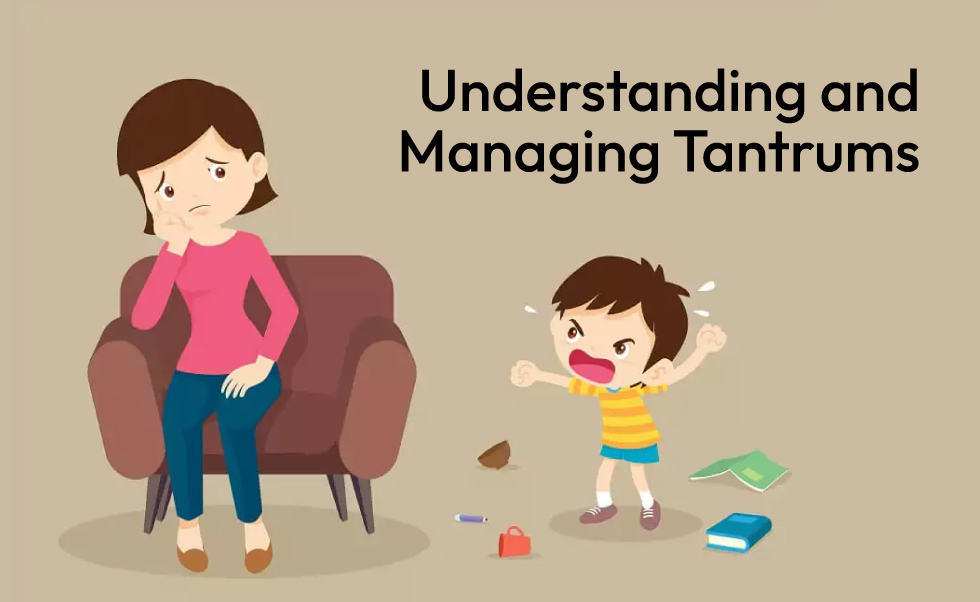Tantrums are a common part of childhood, especially in the early years. They can be challenging and stressful for both children and parents. However, understanding why tantrums occur and how to manage them effectively can make a significant difference. Below are valuable insights and practical tips for parents on understanding and managing tantrums.
What Are Tantrums?
Tantrums are emotional outbursts characterized by crying, screaming, kicking, or disruptive behavior. They often occur in children between the ages of 1 and 4 but can also be seen in older children. Tantrums are a normal part of development as children learn to navigate their emotions and communicate their needs.
Why Do Tantrums Occur?
Understanding the root causes of tantrums can help in managing them effectively. Here are some common reasons why children have tantrums:
- Frustration: Young children often experience frustration because they cannot express themselves verbally or struggle with new tasks.
- Overstimulation: Too much noise, activity, or sensory input can overwhelm a child, leading to a tantrum.
- Hunger or Fatigue: Basic needs like hunger and tiredness can trigger tantrums when not met promptly.
- Desire for Independence: As children grow, they seek more independence. When their desires are thwarted, it can result in a tantrum.
- Attention-Seeking: Sometimes, children use tantrums to get attention from their parents or caregivers.
- Testing Boundaries: Children might have tantrums to test the limits set by their parents or to see if rules will be enforced consistently.
Managing Tantrums Effectively
Managing tantrums requires patience, understanding, and consistency. Here are some strategies that can help:
- Stay Calm and Composed: Your reaction to a tantrum sets the tone for how it will be resolved. Staying calm can help de-escalate the situation. Take deep breaths and try to remain composed.
- Acknowledge Emotions: Let your child know that you understand their feelings. Saying “I see that you’re upset” can validate their emotions and make them feel heard.
- Set Clear Boundaries: Consistency is key in managing behavior. Set clear boundaries and stick to them. Explain the rules in simple terms and enforce them consistently.
- Offer Choices: Giving your child choices can help them feel more in control and reduce frustration. For example, “Do you want to wear a blue or red shirt?”
- Use Distraction: Distraction can effectively divert a child’s attention away from what is causing the tantrum. Offer a toy, suggest a game, or point out something interesting.
- Provide a Safe Space: Sometimes, children need a quiet space to calm down. Create a safe and quiet area where your child can relax and regain control of their emotions.
- Teach Emotional Regulation: Help your child learn to manage their emotions by teaching them techniques such as deep breathing, counting to ten, or using words to express their feelings.
- Praise Positive Behavior: Reinforce good behavior by praising your child when they handle a situation well. Positive reinforcement can encourage them to repeat the desired behavior.
Prevention Strategies for Tantrums

While it’s not always possible to prevent tantrums, certain strategies can reduce their frequency and intensity:
- Establish Routines: Consistent daily routines provide children with security and predictability. Knowing what to expect can reduce anxiety and frustration.
- Ensure Basic Needs Are Met: Ensure your child is well-fed and rested. Regular meals and naps can help prevent tantrums caused by hunger or fatigue.
- Limit Overstimulation: Create a calm and organized environment. Limit exposure to loud noises, bright lights, and crowded spaces, especially if your child is prone to sensory overload.
- Prepare for Transitions: Give your child advance notice before transitioning from one activity to another. For example, “We will leave the park in five minutes.”
- Encourage Communication: Help your child develop language skills and encourage them to use words to express their needs and feelings. The more they can communicate, the less likely they will resort to tantrums.
When to Seek Help
While tantrums are a normal part of childhood development, there are times when they may indicate a need for professional help:
- Frequency and Intensity: If tantrums are frequent, severe, or last for an extended period, it might be helpful to consult a pediatrician or child psychologist.
- Impact on Daily Life: If tantrums significantly impact your child’s daily life or your family’s well-being, seeking professional advice can be beneficial.
- Developmental Concerns: If you have concerns about your child’s development or behavior beyond tantrums, seeking guidance from a healthcare professional is important.
In summary
Understanding and managing tantrums is a crucial aspect of parenting. By recognizing the reasons behind tantrums and using effective strategies to manage them, you can help your child navigate their emotions and develop healthy coping mechanisms. Patience, consistency, and empathy are key in guiding your child through these challenging moments. With time and practice, you and your child will become more adept at handling tantrums, leading to a more harmonious and enjoyable family life.







